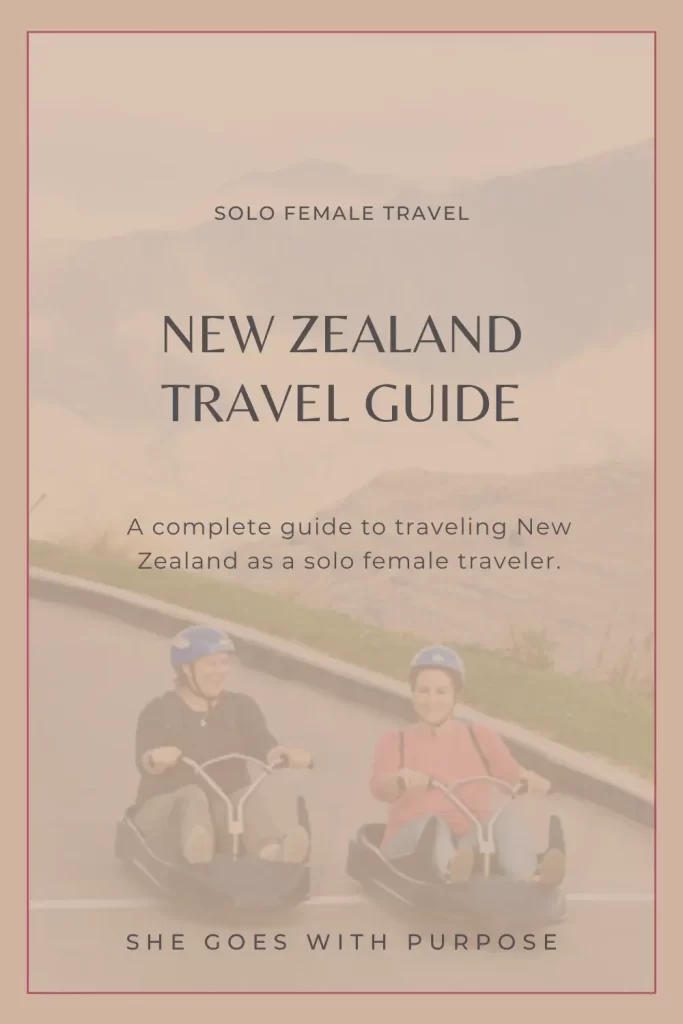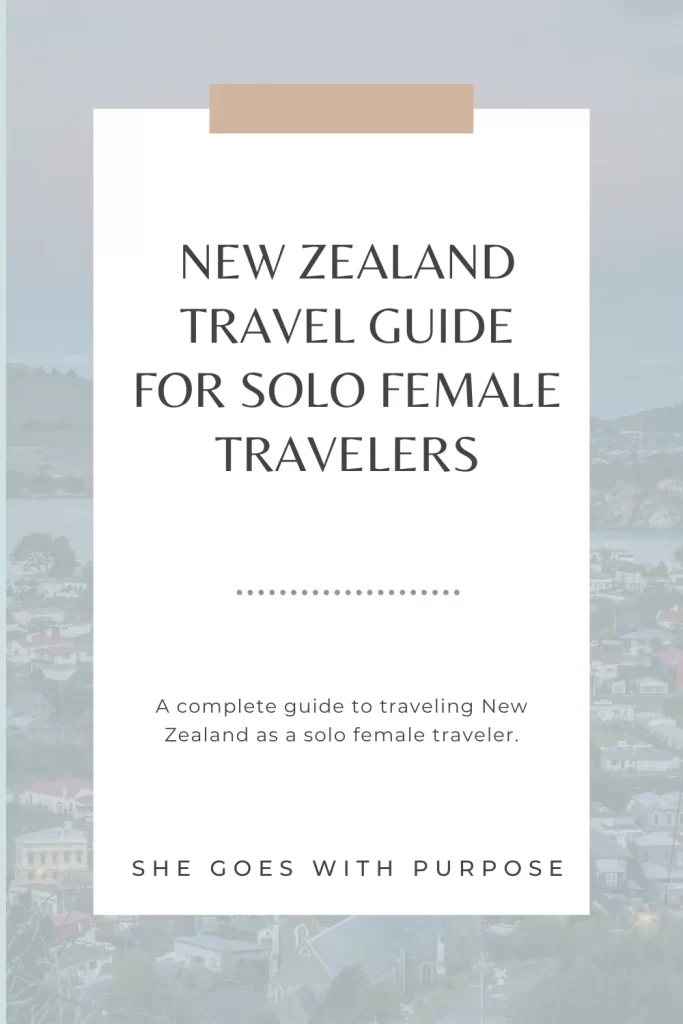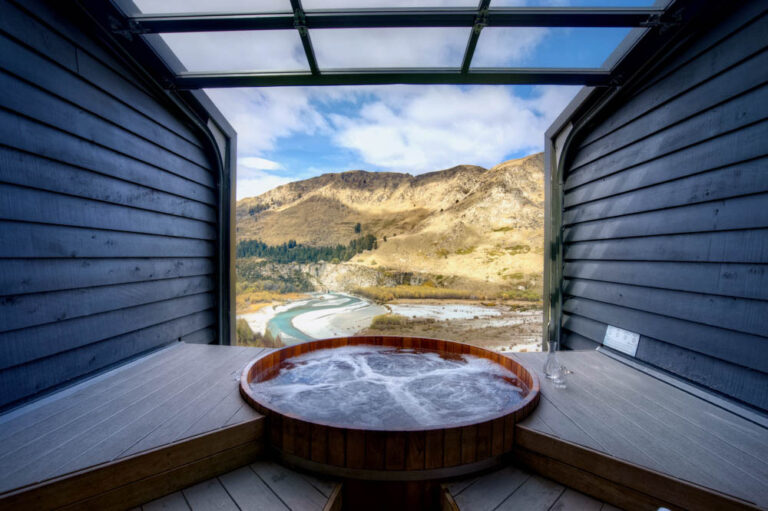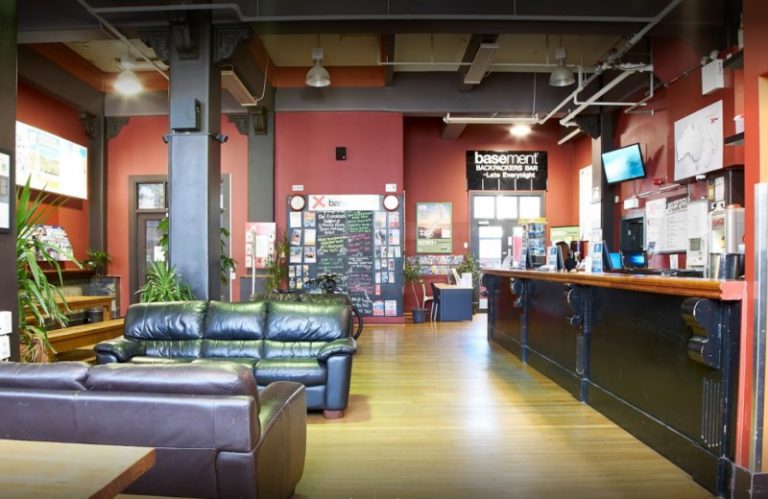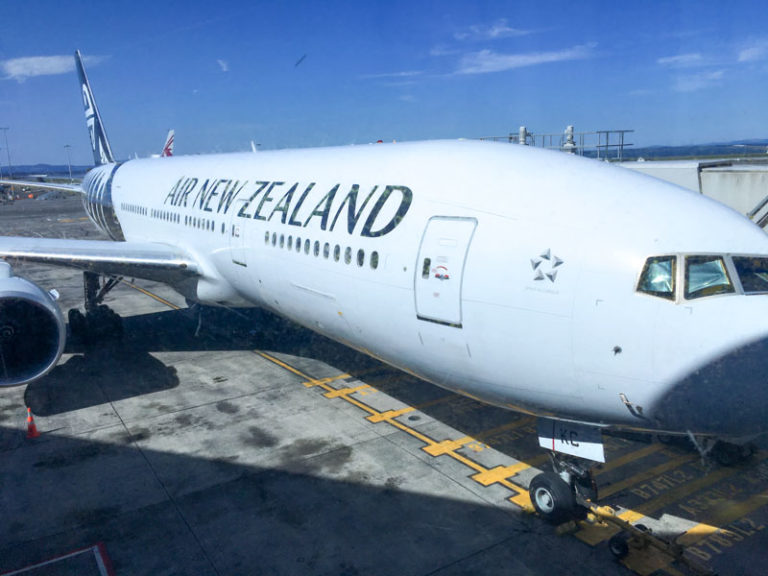My first long-term solo travel experience was in New Zealand. In 2017, I spent three months traveling on a working holiday visa.
I was 35 years old and felt slightly out of place, especially while searching for jobs. I never did find a place to work, but I don’t regret spending that time there. I faced my fears and learned a lot about myself in the process.
I’ve included everything I’ve learned about the country in this New Zealand Travel Guide to help you plan your trip there.
New Zealand Travel Guide: Must-Know Facts
New Zealand Flag

- Capital City: Wellington
- Language: English, Māori, New Zealand Sign Language
- Currency: New Zealand Dollar
- Size: 103, 483 square miles
- Population: 4.9 million
- Time Zone: New Zealand Standard Time GMT+12
Brief History + Geography
Where is New Zealand? New Zealand is an island nation located in the Southern Hemisphere. It’s a remote, isolated country in the southwestern Pacific Ocean, about 900 miles east of Australia. Also nearby are Fiji, New Caledonia, and Tonga, about 600 miles north of New Zealand.
Due to its small size and remote location, it’s often cut off maps or left out completely. I’ve noticed this happens mostly on older maps and artistic renderings of world maps.
Due to its location, it was one of the last locations on Earth to be inhabited by humans between 1250 and 1300. The Polynesians who settled there became the distinct Māori culture of today.
In the mid-1800s, New Zealand became a British colony, then a dominion in the early 1900s, and finally gained independence in 1947 with Britain as head of state.
Today, nearly 75% of the country’s population is of European descent and about 15% of Māori descent.
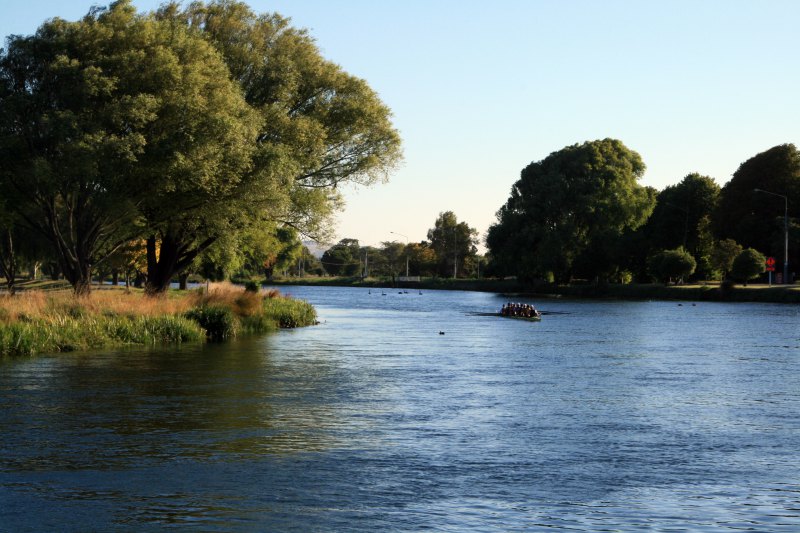
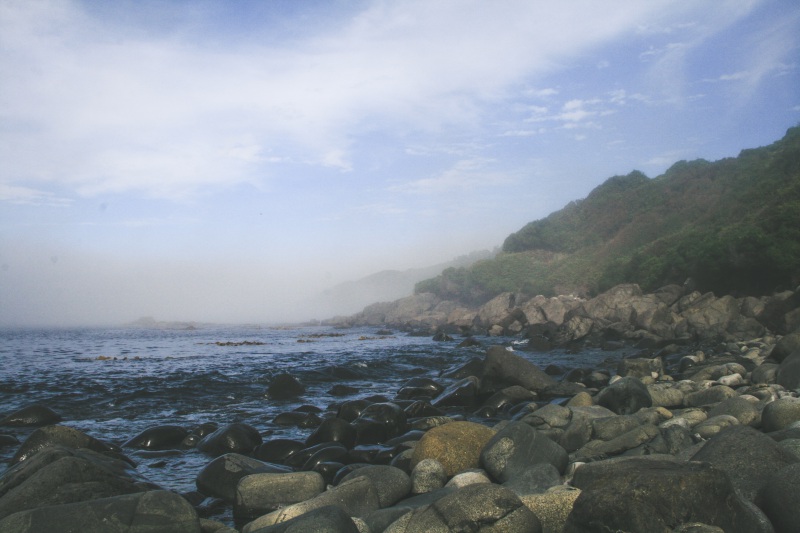
What to Expect in New Zealand
Southern Hemisphere Seasons
New Zealand is in the southern hemisphere, so its seasons are the opposite of those in the United States.
- Spring – September to November
- Summer – December to February
- Autumn – March to May
- Winter – June to August
When to Visit New Zealand
There is no bad time to visit New Zealand but remember that the seasons are the opposite of those in the US. You’ll want to consider where in New Zealand you want to go because the more tropical North Island is warm all year, while the South Island has more seasonal weather changes. Also, consider the activities you want to do, your ultimate budget, and what you want to see when deciding what time of year you plan your visit.
Currency Exchange Rate
1 USD equals 1.62 NZD. Exchange rates fluctuate, so use the Xe currency exchange app for up-to-date information.
Credit Cards and ATMs
Credit and debit cards, as long as they’re Visa or MasterCard, are widely used for purchases or cash withdrawals in New Zealand. Ensure your cards are chip-enabled (this was not the norm in the US when I went) and have a four-digit PIN code (optional on some credit cards).
Electronics (plugs)
The plugs in New Zealand are Type 1, with three pins. On top, two slanted and flat blades form an inverted V, and a grounding blade below. The standard voltage is 230 V, and the standard frequency is 50 Hz. Before you go, get a universal adapter with surge protection.
Safety
New Zealand is one of the safest countries in the world and a top destination for solo female travelers. However, practice common sense, keep an eye on your belongings, and trust your intuition if a situation makes you uncomfortable.
Check out my early observations of New Zealand culture.
New Zealand FAQs
Typical Costs For Budget Travelers
Suggested Daily Budget – $75 to $100 USD
This number assumes you stay at hostels, rarely eat out, cook most of your meals, use local transportation, and do mostly free activities. Expect the number to be higher if you stay at hotels or an Airbnb, eat out more often, and pay more frequently for tours and entrance fees.
Lower this number by using my budget tips below. Also, check out my trip cost breakdown as a solo female traveler for a more detailed explanation of how much I spent on this trip.
My Budget for a 3-month trip to New Zealand
TOTAL: $6080
Transportation
Buses
By far the easiest public transportation option in New Zealand to navigate, it can be very affordable, too. There are several types of buses to choose from.
A-B bus lines offer rides from point A to point B. Depending on the bus line, you can create a DIY itinerary as you go or buy passes that include a certain number of trips or hours.
I primarily rode Intercity Bus while in New Zealand. Skip Bus replaced Mana Bus and Naked Bus as the top budget bus line in New Zealand, but it looks like they have suspended services for now.
Hop-on, hop-off bus lines (or backpacker buses) are a hybrid of A-B bus lines and tour buses that cater to young backpackers who want flexibility. They offer various planned routes from 1-27 days, book hostels for you, and plan activities.
You can stay on the same bus for the entire length of the route you selected or hop off at any point for a longer stay. When you’re ready to move on, you hop on the next bus, as long as it is within the valid travel dates.
The cost for different routes ranges from about $85 NZD to $1600 NZD, plus the activities you participate in and all hostel beds they book for you.
To learn more, check out Kiwi Experience and Stray Travel (hop-on, hop-off travel suspended until October 2023).
Small group tours are great for day trips, like the tour I took to Hobbiton and Waitomo Glowworms Cave, or longer tours for those who don’t want the stress of planning where to stay, booking activities, finding restaurants, etc. For now, Stray Travel focuses on small group tours with included hotel stays, so check them out.
This post I wrote for The Budget-Minded Traveler describes bus travel in New Zealand in much more detail.
Trains
New Zealand has three scenic train lines: the Northern Explorer, Coastal Pacific, and TransAlpine. Trains run on select days during the week; tickets sell out quickly, so plan well in advance. Check schedules and book tickets at Great Journeys of New Zealand.
Ferries
The Interislander Ferry travels between Wellington on the North Island and Picton on the South Island through the beautiful Cook Strait. The one-way passage starts at $70 NZD and goes up with extras like vehicles or upgrades. Check schedules and book tickets at Great Journeys of New Zealand.
If you’re a fan of ferries, check out the ones from Auckland that go to places along the inner harbor, Waiheke Island, and Coromandel. Check Auckland Transportation and Direct Ferries for ticketing information.
Flying
Flying Air New Zealand or Jetstar between major cities and regional airports in New Zealand is not budget-friendly, but it is fast. The longest domestic flight time is between Queenstown and Auckland at two hours, costing about $100 NZD.
Driving
Driving is a very popular form of transportation in New Zealand because you can get into the country’s nooks and crannies. Driving is the only way to get to the most remote places in New Zealand.
Many long-term travelers purchase used campervans or converted vehicles when they arrive, which helps them save on accommodation costs as they travel. They then sell the vehicles before they leave the country.
On shorter trips, you can rent a campervan or car. Prices will depend on the length of rental, pick-up and drop-off locations, and extras. Compare prices for camper vans at Britz, Jucy, Spaceships Rentals, Travellers Autobarn, or Wicked Campers, and for rental cars at Enterprise, Go Rentals, Hertz, or Omega Rental Cars.
Or let RentalCars.com do the comparison for you.
Must-Know Info About Driving in New Zealand
- New Zealanders drive on the left-hand side of the road, and the driver is on the right side of the car, opposite us here in the United States.
- Visitors from the US can drive in New Zealand using their US license for up to 12 months. After that, you must convert to a local license.
- The speed limit in residential and urban areas ranges from 20 kph to 80 kph and tops off at 100 kph on the open road. There are speed cameras and police checkpoints set up in many places, and you can lose your driving privileges if caught speeding.
- You buy petrol by the liter, so expect to be shocked when calculating the cost per gallon. As of August 2022, the cost per liter is $2.77 NZD, which is $10.49 NZD per gallon.
- It’s illegal to use your phone while driving.
Accommodations
Camping and hostels will be the most affordable accommodations in New Zealand.
Freedom camping costs nothing, as the name suggests, and is very popular and accessible across New Zealand. You need a certified self-contained camper van with a toilet to freedom camp.
Campsites operated by the Department of Conservation cost $12 to $15 NZD per night, and holiday parks cost $20 to $60 NZD per night – on top of the cost of your vehicle.
Hostels, or backpackers, are in every city and town across New Zealand. Beds in dorms range from $25 to $40 NZD per night, and private rooms will be slightly higher.
Airbnb is another option. Renting a private room in a home will range from $20 to $100+ NZD depending on the location. See more below on hostels and Airbnbs in New Zealand.
Food
My average daily food cost in New Zealand was $21 NZD, including occasional take-out or restaurant meals, drinks, and ice cream cones. I ate well, maintaining the same type of diet that I follow at home: lots of fresh veggies and fruit with rice, bread, or pasta daily. Occasionally, I’d add meat to meals, but my main source of animal protein was eggs.
I drank coffee daily, too, but opted for cheap instant coffee at my lodging and only occasionally treated myself to a cappuccino or flat white at a coffee shop.
The cost of dining out can really add up. For example, a meal at an inexpensive take-away restaurant (like the Pita Pit or Burger Fuel – a couple of my favorites) will start at about $20 NZD. A restaurant with a table service meal will start at about $40 NZD. Look for deals at Dominoes – I sometimes got a personal pizza for $5 NZD.
For drinks, flat white costs $5 NZD, beer or cider costs about $9 NZD, and a glass of wine costs about $12 NZD. Forget bottled water and fill your reusable water bottle with what might be the most refreshing tap water on the planet.
You’ll find everything you can find back in the States, plus some foods that are from New Zealand, like manuka honey, feijoa, and hokey pokey ice cream. In addition to chicken, beef, and seafood, lamb and venison are popular meats. However, vegetarian and vegan meals are very easy to find.
Most cities and small towns will have either a PaknSave or a Countdown to do your grocery shopping. Shop at New World sparingly if you want to keep to a budget.
You have to try hand pies while you are in New Zealand! My favorites were breakfast hand pies from dairies. And I wish I could have tried hangi, a Maori specialty of meat and vegetables cooked underground.
Money-Saving Tips
Cook your own food. Make sure your lodging has a kitchen and shop for groceries at Pakn’Save or Countdown.
Look for free walking tours. Most hostels will post walking tour information, or you can ask someone at the front desk.
Save on last-minute tours. Use the bookme.co.nz website to find discounted tours and activities available only a day or two out. This is how I saved on my tour of Hobbiton and Waitomo Glowworm Caves.
Book through an i-Site. The lovely people working at the traveler information kiosks nationwide are so helpful. They know the best places to stay and bus routes to take and will get you a great deal.
Visit on a working holiday. With a working holiday visa, you can make money working temporary jobs while you travel, which would help you stay in New Zealand longer!
WWOOF your way around the country. WWOOFing is a work exchange program where visitors work on a farm in exchange for room and board.
Places to Visit in New Zealand
I traveled around New Zealand for nearly three months, and while I didn’t get to all the places I wanted to, I visited a fair number. Here are some of my favorites:
Cities
- Christchurch
- Queenstown
- Dunedin
- Auckland
- Napier
Small Towns
- Picton
- Bluff
- Te Anau
- New Brighton
- Lyttelton
Nature + Parks
- Milford Sound
- Fiordland National Park
- Mount Victoria Lookout
- Tunnel Beach
Things to Do in New Zealand
My top recommendations for things to do and see in New Zealand.
Activities
- Visit Hobbiton
- See Glowworms
- Go Luging
- Learn about earthquakes
Nature + Parks
- Milford Sound
- Fiordland National Park
- Mount Victoria Lookout
- Tunnel Beach
Cities + Towns
- Christchurch
- Dunedin
- Napier
- Picton
- Queenstown
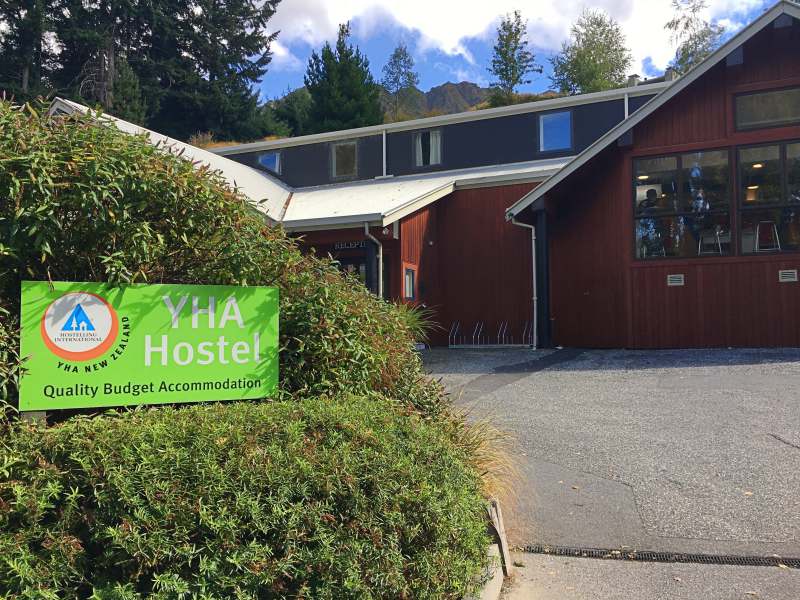
Where to Stay in New Zealand
Hostels
Hostels in New Zealand are plentiful (there are several to choose from, even in small towns) and affordable. Prices ranged from $14-21 USD per night for a dorm in a female-only room or $40 per night for a private room. Some hostels were in towering multi-level buildings, others were in refurbished hotels or motels, and some were in large houses with just a few beds.
I stayed at hostels run by well-known organizations like Budget Backpacker Hostels (BBH), YHA New Zealand, and Base Backpackers. They all had female-only rooms, good kitchens to cook meals, and were clean. I also stayed at several independent hostels that provided a range of experiences.
Booking(.com) was my go-to site to search for hostels while I was there. I like the discounts I receive for being a loyal user and the free cancelation policy. Sometimes, I used Hostel World or called the hostel directly to make reservations.
I have to say that the hostels I booked directly or through Hostel World were not my favorite. Something about them made for a bad experience – the cleanliness standards were way below my own, the staff was unkind or unprofessional, the other guests were insufferable, and I got bad overall vibes.
New Zealand Accommodation Reviews
Airbnb
To mix things up and take a break from hostel dorm rooms, I stayed at two Airbnbs. One in Christchurch and Invercargill. While this considerably added to my total trip budget, I felt it was sometimes worth the money to have my own space.
Both Airbnb experiences involved renting a room in someone’s home. The hosts were pleasant and helpful – they both offered to pick me up from the bus station when I arrived and provided everything I needed.
I don’t review Airbnb stays here on the blog because of the nature of the platform. Places come and go so quickly, and I’d hate to recommend a place just for it to disappear the next day!
Latest New Zealand Posts
SAVE THIS POST FOR LATER!
